I’m not one for point-and-shoot, automatic everything cameras. I’m not knocking such cameras; they’re excellent and have introduced many photographers to the world of film through their ease of use, pocketability and appeal in popular culture. Not to mention the Instagram and Celebrity crowd. Sadly this has also caused the price of certain premium and even primary point-and-shoot cameras to skyrocket in price. However, I do love a good unique camera, and the Minolta Weathermatic 35DL certainly fits that criteria. There are two reasons for this; the first and most apparent is that the camera is designed for underwater applications, fully watertight but can also operate on dry land as a weather-sealed camera. Plus, it’s bright yellow and chunky in its appearance. The second is that it’s a dual-lens camera. While ‘dual lens’ is a misnomer, a better description is that the camera has dual focal lengths. While this isn’t a camera I would buy if I saw one on the shelf, this one came to me in last year’s Emulsive Secret Santa gift exchange with my match, stating that it would be a good camera for Canada’s winter. And I made a point to shoot the camera in bad weather, and it handled things like a champ.
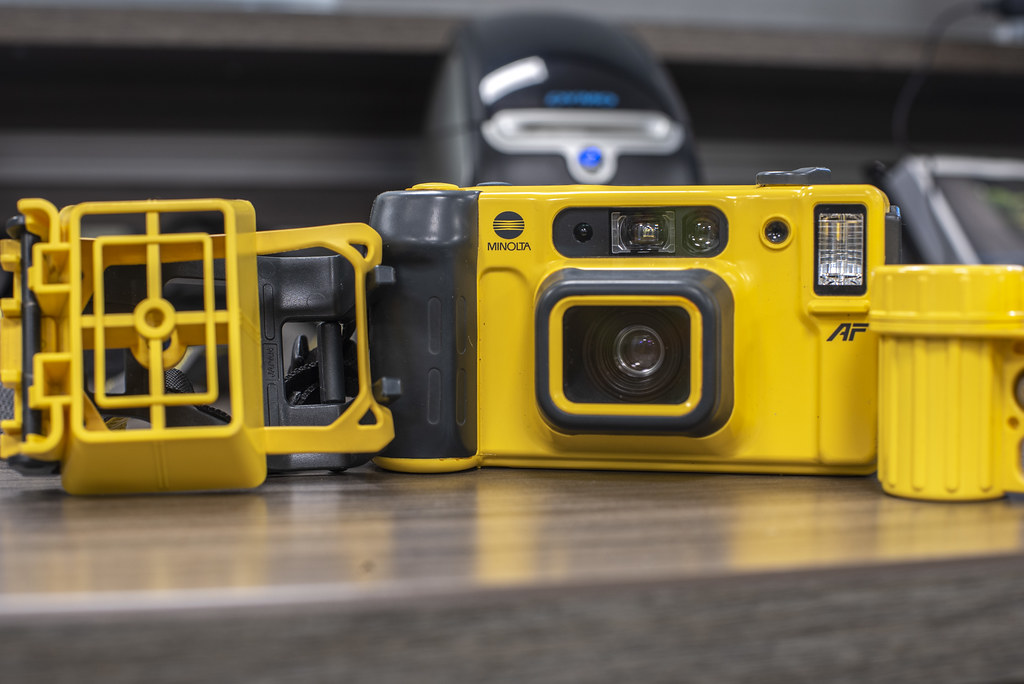
Camera Specifications
Make: Minolta
Model: Weathermatic 35 DL
Type: Point-And-Shoot
Format: 135 (35mm), 36x24mm
Lens: Fixed, Minolta DL 35/50mm 1:3,5-5,6
Shutter: Program AE
Meter: Subject-Weighted metering, Auto-Exposure, EV9 ~ EV16.5 @ ASA-100, DX-Code ASA-100 to ASA-1000 (C-41), ASA-100 or ASA-400 (E-6)
Autofocus: Active Infra-Red, ∞ – 0.75m, auto-close up function 0.52m @ 35mm or 0.62m @ 50mm
Year of Manufacture: 1987
Background
While Minolta is best known for its early camera offerings, like many camera manufacturers, the late 1970s and into the 1980s brought significant changes. While SLRs remained popular among professionals and advanced users, autofocus point-and-shoots were becoming popular among consumer users. Minolta’s first offering, the Hi-Matic AF 1979, introduced the idea of the compact autofocus point-and-shoot. Minolta followed the original Hi-Matic AF with two more versions in 1981 and 1982. The introduction in 1983 of the AF-C took on a new look and feel. The AF-E, released in 1984, updated the design of the Minolta compact point-and-shoot and even received the good design award for the year. But the one thing that these early point-and-shoots lacked was a zoom lens. While we often see this as a good thing these days, with these fixed focal length cameras often going for a premium online, photographers in the 1980s wanted something a little more versatile. Minolta’s first step was the introduction of a dual-lens camera, that being a lens that had two different fixed focal lengths. Taking the design cues from the AF-E, the AF-DL released in 1987 added a lens that could have two selected focal lengths, a 35mm and a 50mm option. But Minolta decided to take it a step further and decided to take the AF-DL and turn it into a consumer underwater camera. Now underwater photography has been around for over a century, with the first dedicated underwater camera being built in 1856 and the first underwater image was taken in 1893. However, commercial success for the format wouldn’t take place until 1957 and the release of the Calypso, designed by noted underwater explorer Jacques-Yves Cousteau and built by French camera maker La Spirotechnique. The design eventually purchased by Nikon became the base for 1963’s Nikonos. But for the average photographer, a specialised camera like the Nikonos (the Nikonos V by 1984) would be out of reach of average holidaymakers. But the Weathermatic 35DL did face some competition with several other all-weather, all-terrain compacts, but with the Weathermatic 35 DL is also rated as an underwater camera (to ~5 meters). It was only one of three on the market in 35mm. While the 110 formats Weathermatic-A would be a dead-end, the 35 DL continued production until 1998, when it was replaced with the Minolta Vectis Weathermatic Zoom, although it would use the APS format. Today most underwater applications are made using traditional digital cameras with specialised optics, lighting and most importantly, watertight housings.

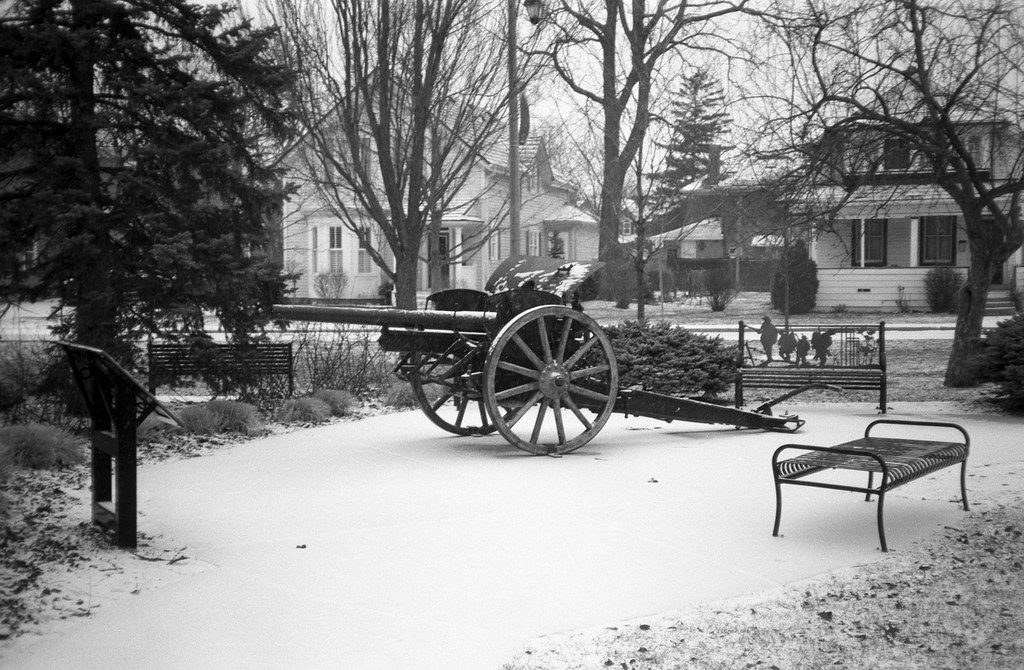


Impressions
Well, it’s yellow. That is honestly the first thing you’ll see when looking at any of the Minolta Weathermatic cameras, but the 35DL pulls it off rather nicely. The exterior cover is a mix of yellow and grey with a bit of rubberised coating that doesn’t seem to be affected by the degradation that this kind of material often suffers. But that could change; my copy is in excellent shape. While you can see the linage to the Minolta AF-DL, the entire camera has been weatherproofed and designed for use with gloves on. The control surfaces, such as the big on/off switch, lens select and shutter button, are significant and stand out against the primary body colour. The yellow on grey allows for good high visibility in low light or underwater conditions. The lens is wholly contained within a separate housing with a transparent front plate. The camera has a surprisingly hefty feel without being overly heavy, the large grip is comfortable, and I could easily use the camera all day. The Weathermatic 35DL will undoubtedly be an easy fit if you’re used to working with point-and-shoots because it can perform above and below the waves.



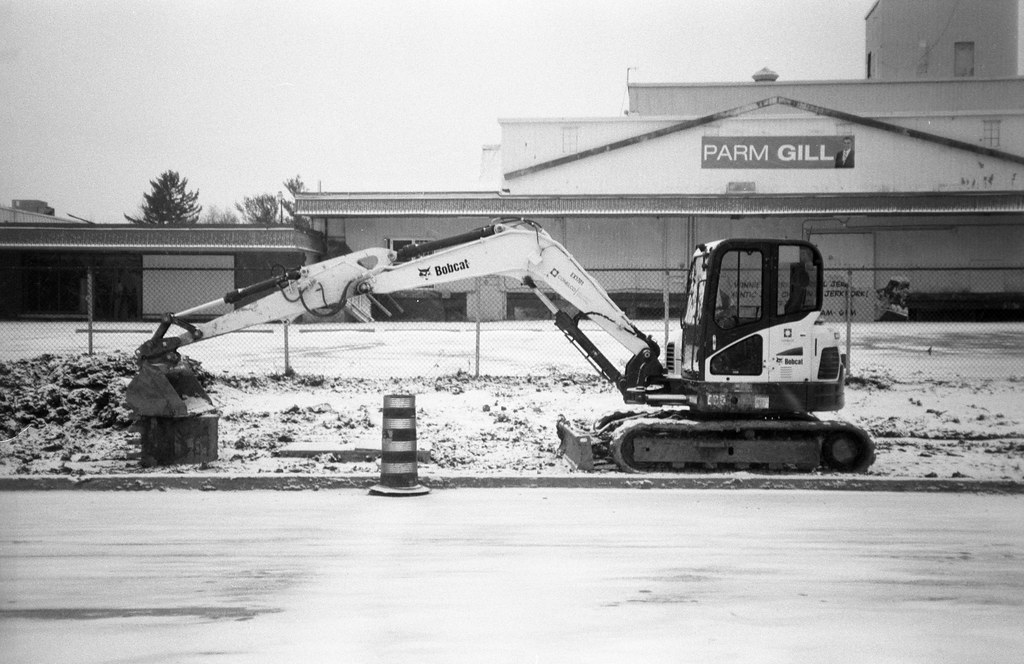
Experiences
It’s amazing how a camera this simple, this automatic is so much fun to photograph with; you can focus on your shot rather than fiddling with settings and focus. And for someone who loves complete and large camera systems that allow a great deal of control, I rather enjoy the Weathermatic. And the camera certainly lives up to the branding as both times I took it out for this review work, the weather was less than ideal; between ice pellets, sleet and even snow, it handled all three and got some excellent results. The oversized grip and control surfaces make the camera easy to operate while wearing gloves. The housing protects the camera from the elements without impacting the image quality (but more on that later). Loading the film is different from your traditional SLRs. Open up the back; you’ll have to flip down the pressure plate. It’s best to do this indoors where you have a little more control over your fingers as the plate is a bit delicate. The film is loaded on the opposite side of a typical SLR. Load the cartridge, pull the leader across, close the pressure plate over the film and close the rear door. Once the door is shut, the film automatically advances to the first frame. There’s no override for your film speed, so that is set by the cartridge DX code, with a range between ASA-100 to ASA-1000 for negative films, slide film the manual states you’re limited to ASA-100 to ASA-400. Any uncoded cartridges will default to ASA-100, and coded cartridges above or below the range will default to the highest or lowest film speed. Meaning your Pan F+ will shoot at ASA-100 and your Delta 3200 will shoot at ASA-1000. While I didn’t get the chance to see how the camera performed underwater, it’s accessible on dry land and doesn’t have too many issues. The viewfinder is big and bright with clear framing lines to aid in composition and even prevent parallax error. The centre reticle helps set where the camera will set the focus and exposure from. Underwater the viewfinder is useless but having that extensive sports finder will help with composing your shots. The shutter is big and easily pressed; no need for a half-press, and there’s hardly any lag between the press and the camera taking the photo. Adjusting the focal length is another indicated large button, and by pressing it, you can switch between the dual focal length. I was concerned that it was a press and hold function, but a single push flips between the two, and your viewfinder automatically adjusts to allow for composing with the new length, with the same frame lines. The only push and hold buttons are for the close-up feature on the camera; this is a smaller button on the back of the camera but is still easily used with gloves. You use the camera strap approximate the distance between the lens and the subject, like the Olympus XA4. If you are looking at using the camera underwater, make sure the two waterproof gaskets are intact, they’re around the film door and the battery compartment. The manual indicates if they’re damaged, to get them replaced by an authorised Minolta dealer, which sadly no longer exists. But I’m sure some people out there have managed to replace these gaskets. The camera will automatically rewind the film once you’ve shot the entire roll, which may get the thirty-seven frames in some cases. There are a few annoyances, the first being the lack of manual override on the rewind. As someone who prefers to shoot 35 frames, it seems a waste to fire off the last frame or two for the camera to rewind; the second is that the frame counter seems a little inaccurate. Also, there’s no override to the flash; it will pop it the camera thinks it’s needed. I’m also not too fond of where the strap lugs are located, with both being on the handgrip, it makes it difficult to bring the camera up to the eye quickly, and you can only shoot in portrait orientation one way. When it comes to the override controls for rewind and flash, I get why those aren’t included as it would mean having two additional buttons on the camera which do present more potential leak points.
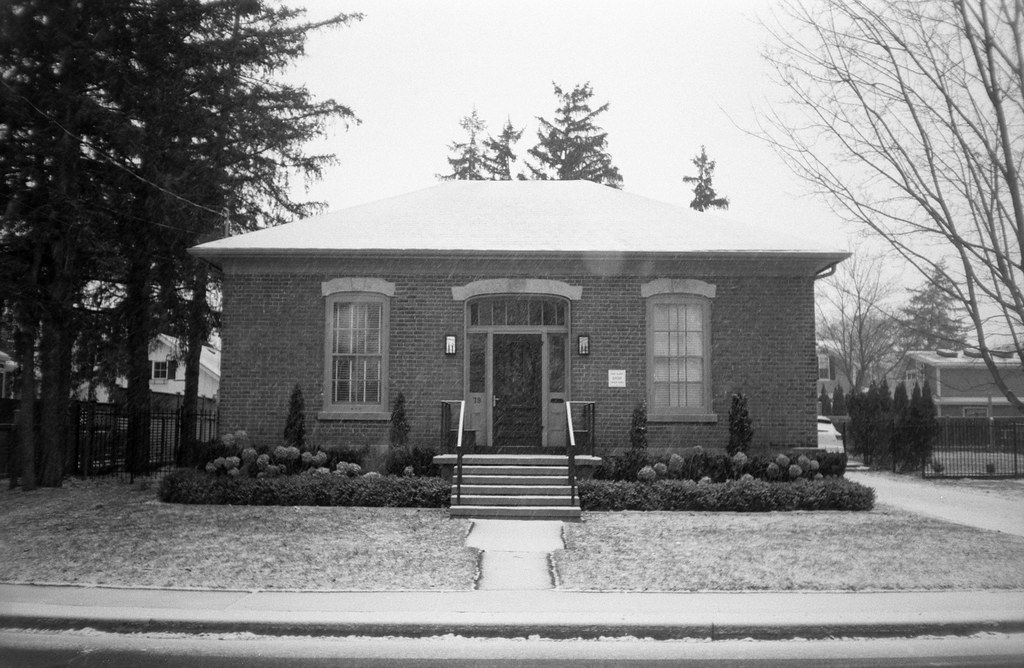

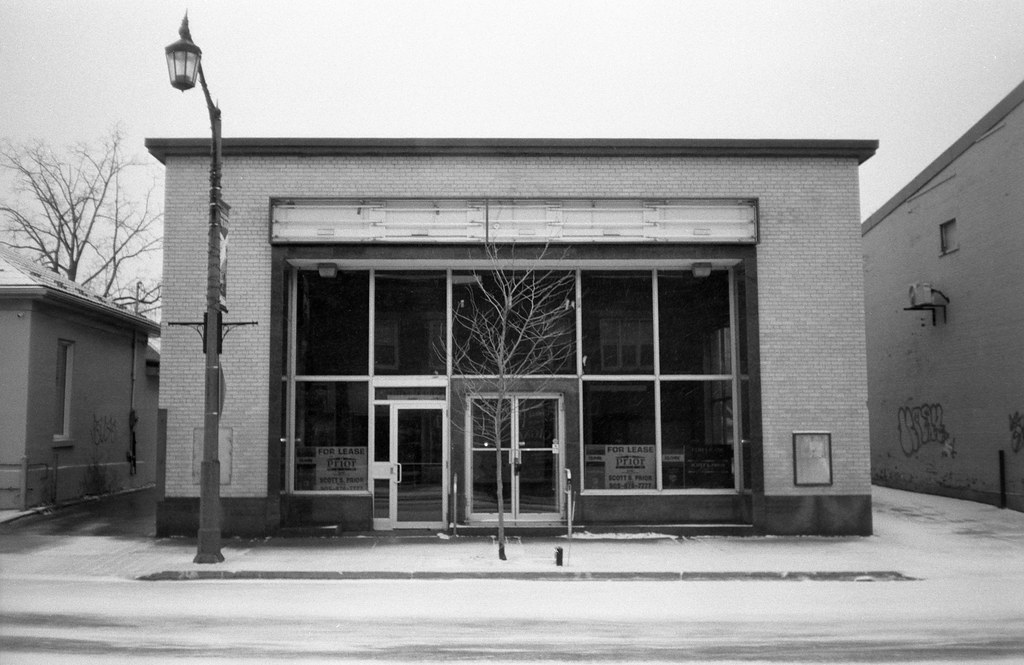

Optics
As mentioned in the opening paragraph, the 35DL isn’t an actual dual-lens camera; it has only one lens but two focal lengths. A precursor for the modern zoom lenses that would almost immediately wipe out the idea of a lens with only two focal lengths. Also, the lack of a full zoom lens allows the camera to be more compact and completely sealed against water and weather; a zoom lens would make the front of the camera far bulkier. The normal focal length is a happy medium between a normal viewing angle and wide-angle with a 35mm f/3.5 lens, while the second length, a 50mm f/5.6, is marketed for close up shots of underwater creatures. On dry land, having two focal lengths is a good thing, with standard photos at 35mm and a quick portrait lens at 50mm. Now, I did not go into shooting the camera expecting top quality images, especially from a point-and-shoot designed for shooting underwater, which is the results I’m presently surprised about. Despite being surrounded by housing I noticed no indication of vignetting caused by said housing. Also, the front covering of the housing didn’t detract from image quality either. I did see a bit of fall-off at the corners on some images, but I’ll mark that up to being shot wide open, but that’s my gut, not actually knowing I was shooting the frame at f/3,5 or f/5,6. The lens produced excellent contrast on the images with black & white film, and I’m going to assume the colour rendering is also excellent on the lens and the images are surprisingly sharp. Personally, I like the results better at the 35mm focal length, but it’s no slouch at 50mm either and certainly is a robust optical performer for a point-and-shoot.
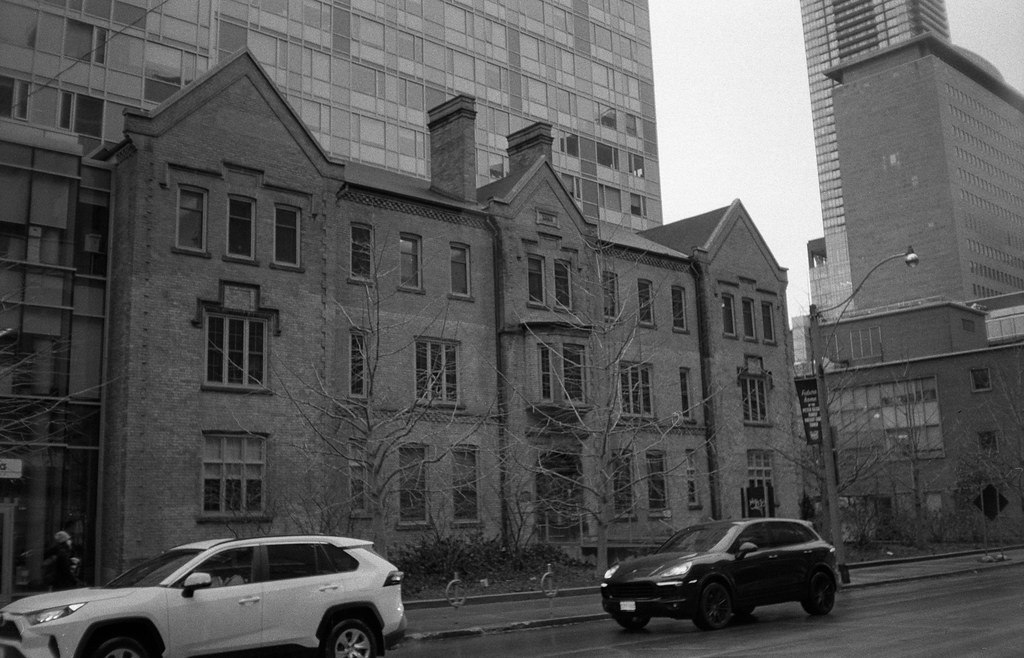


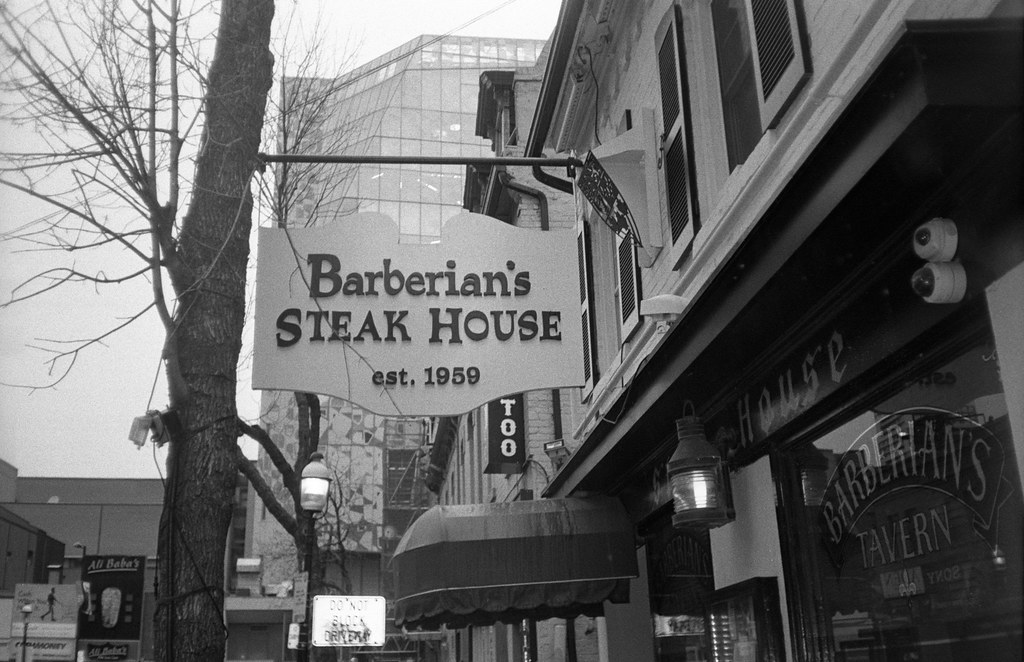
Lowdown
Because of the nature of the camera, it is pretty affordable on the used market. The camera on its own will cost between 30-75$ but you may even be able to find a complete kit with the bag, underwater ‘action’ finder and the weatherproof film holders for around 60-80$. Although there are some outliers with kits going for 100$ or new-old-stock and in the original box for over 300$ those are aimed more at collectors. Make sure you’re buying the 35mm version as there is also a 110 version of the camera. But thanks to the folks at Lomography, there’s plenty of new stock of 110 films making both models useful for the photographer. Will I be keeping this camera? Yes, firstly because it was a gift; second it’s unique enough to keep around as a loaner to someone who wants to try something different or if I want to have a good film camera with me on the beach or in the rain without lugging around my bigger SLRs. Plus I honestly don’t have too many simple auto-everything point-and-shoots in my toolkit, so it’s a nice thing to have, even if it just sits out on the display shelf as a curiosity and is used occasionally.




Further Reading
Don’t just take my word on the Weathermatic 35 DL, you can check out the reviews by other awesome camera reviewers!
Photo Jottings – Minolta Weathermatic 35 DL Review
35mmc – 5 Frames with a Minolta Weathermatic 35DL and Kodak Portra 400
Lomography – Reviewing the Minolta Weathermatic 35 DL
FilmPhotography.EU – Minolta Weathermatic 35DL
CPhifer Photo – Review: Minolta Weathermatic Dual 35
Broken Camera Club – Minolta Weathermatic Dual 35

2 Comments